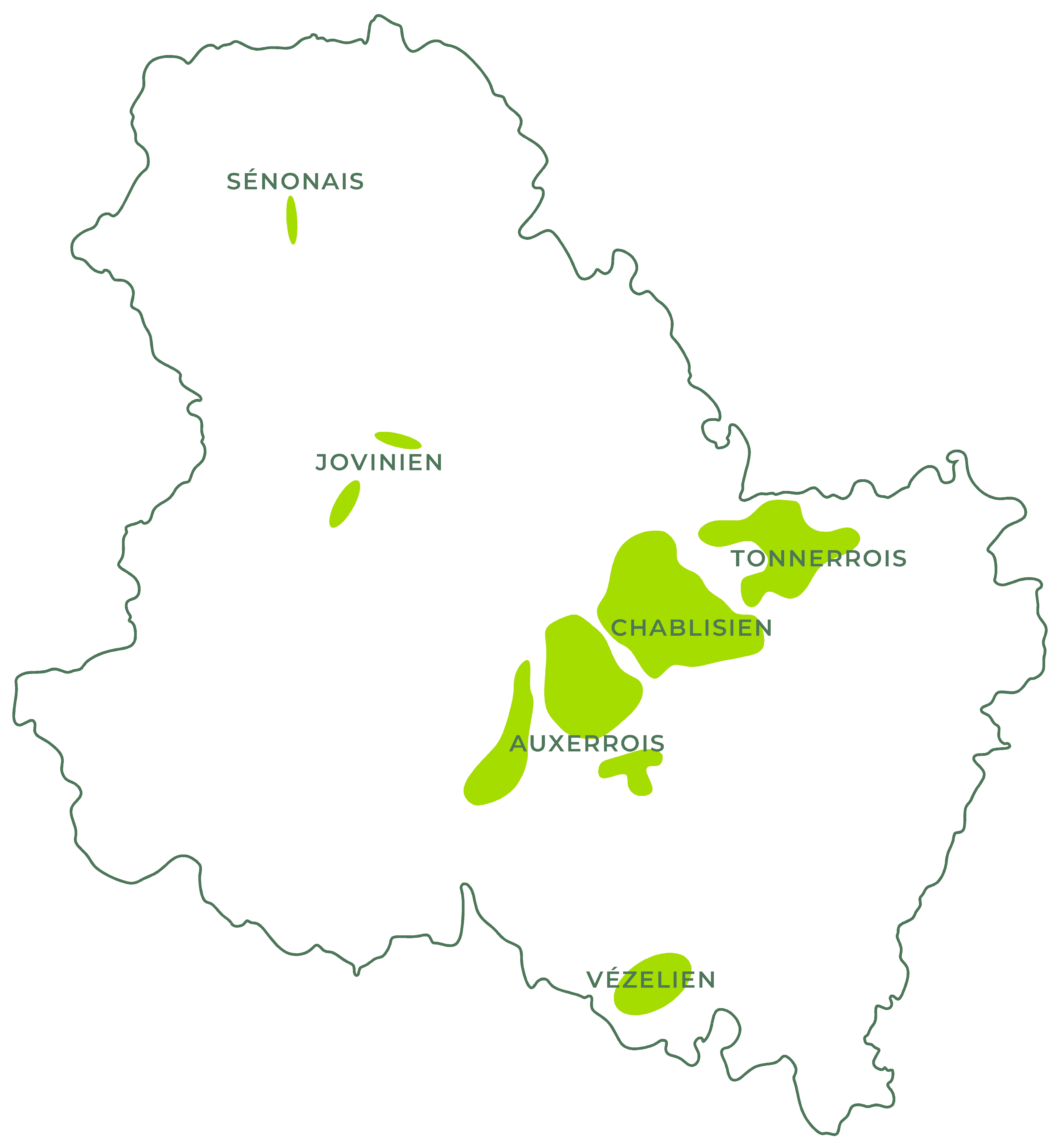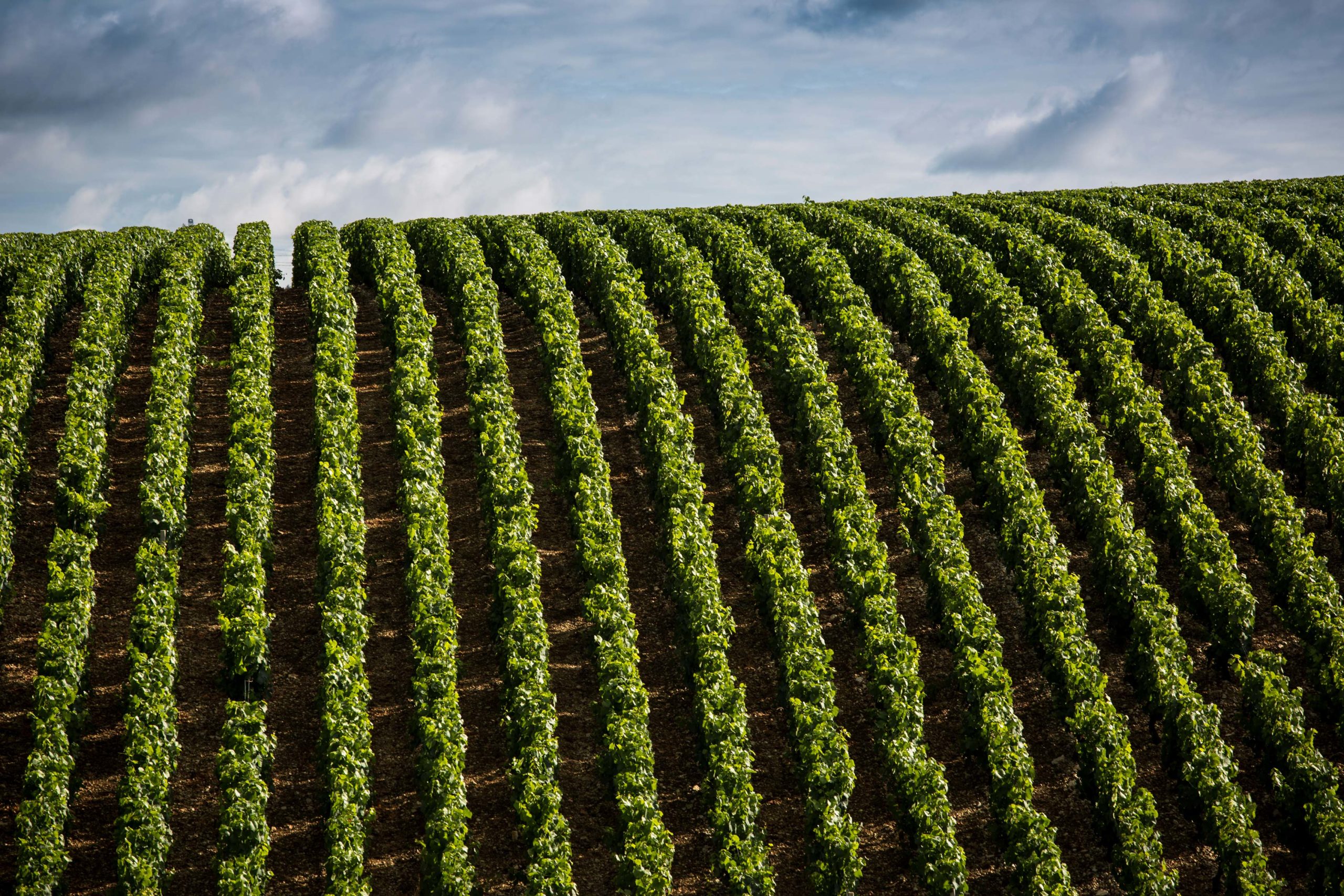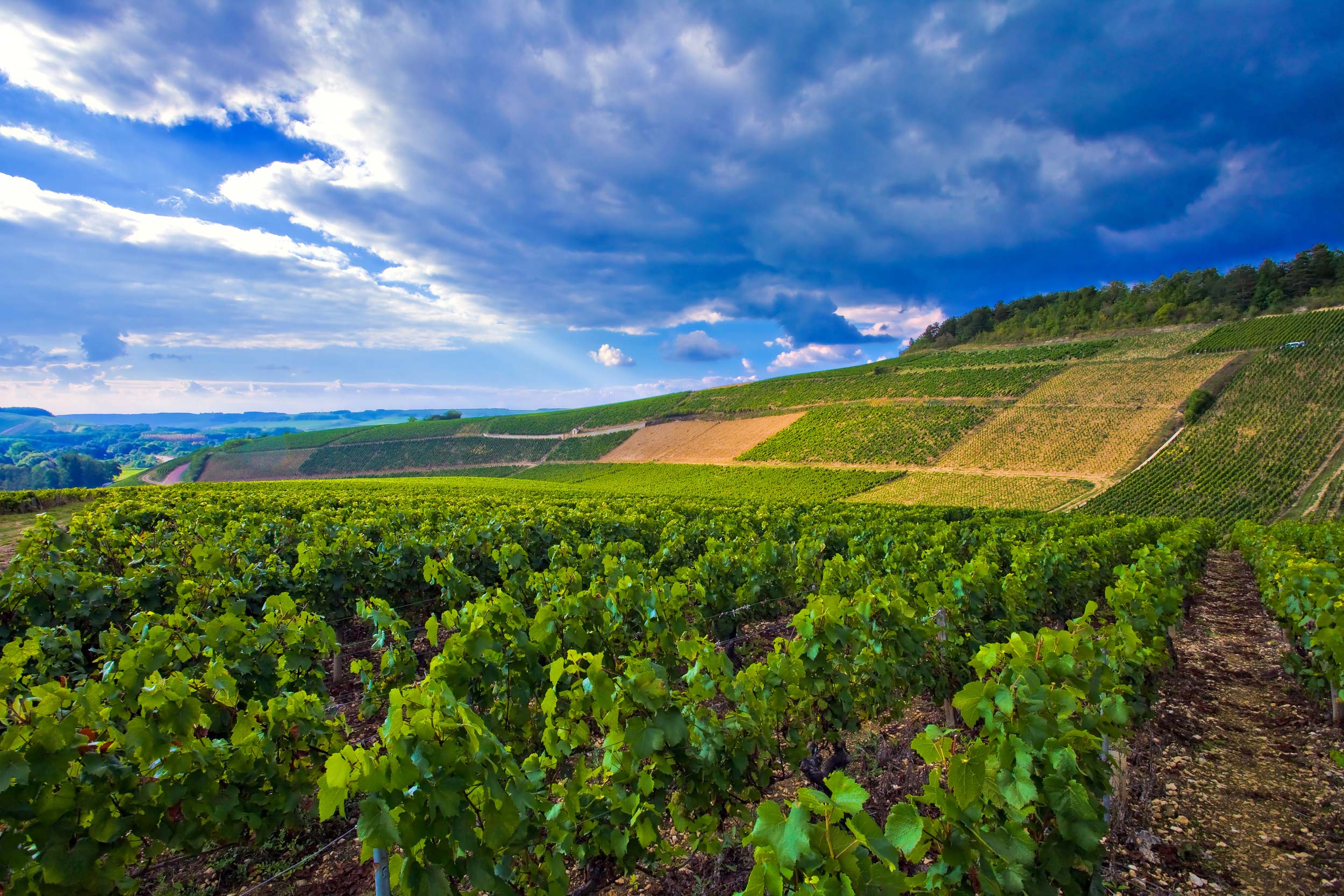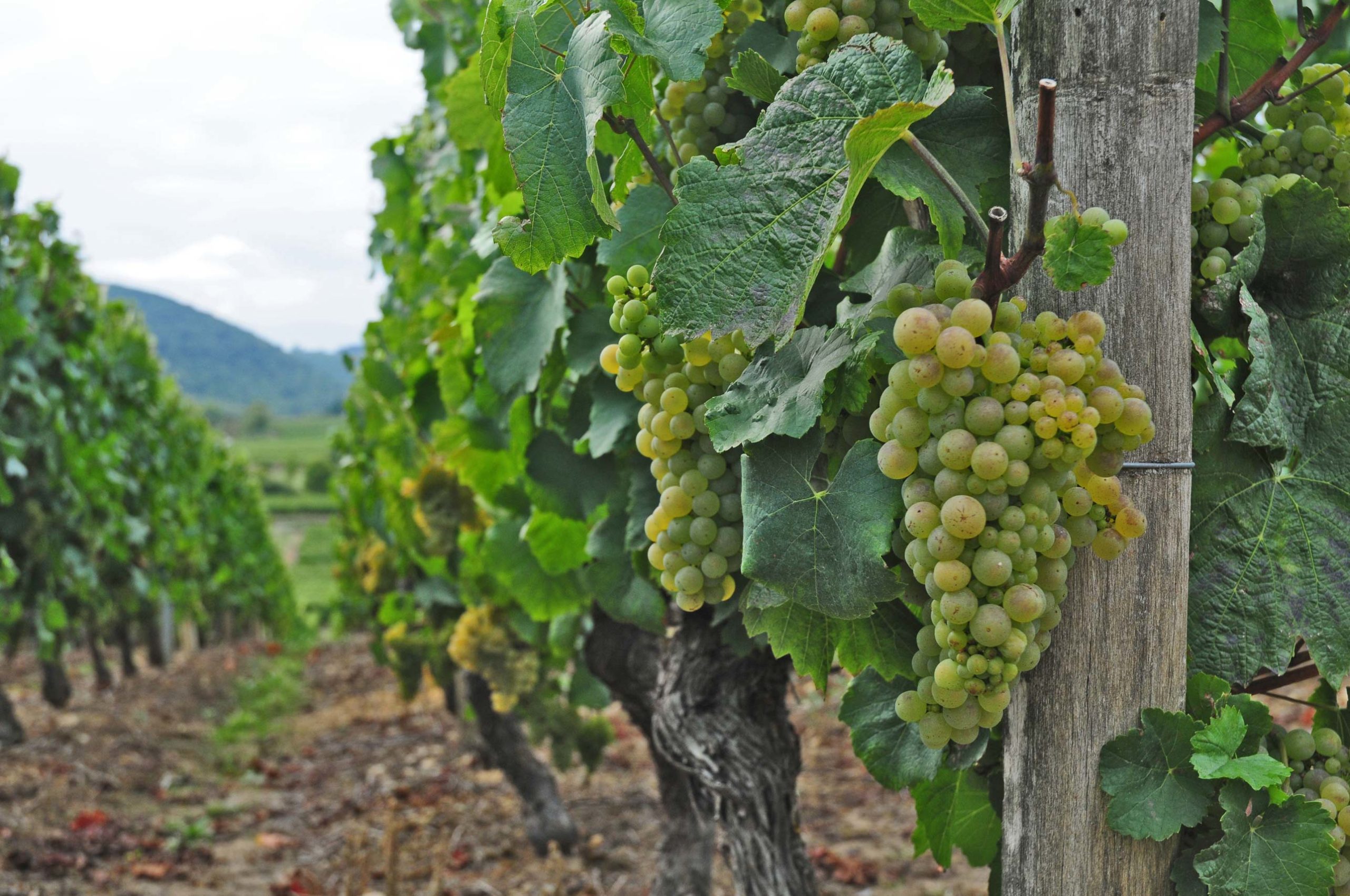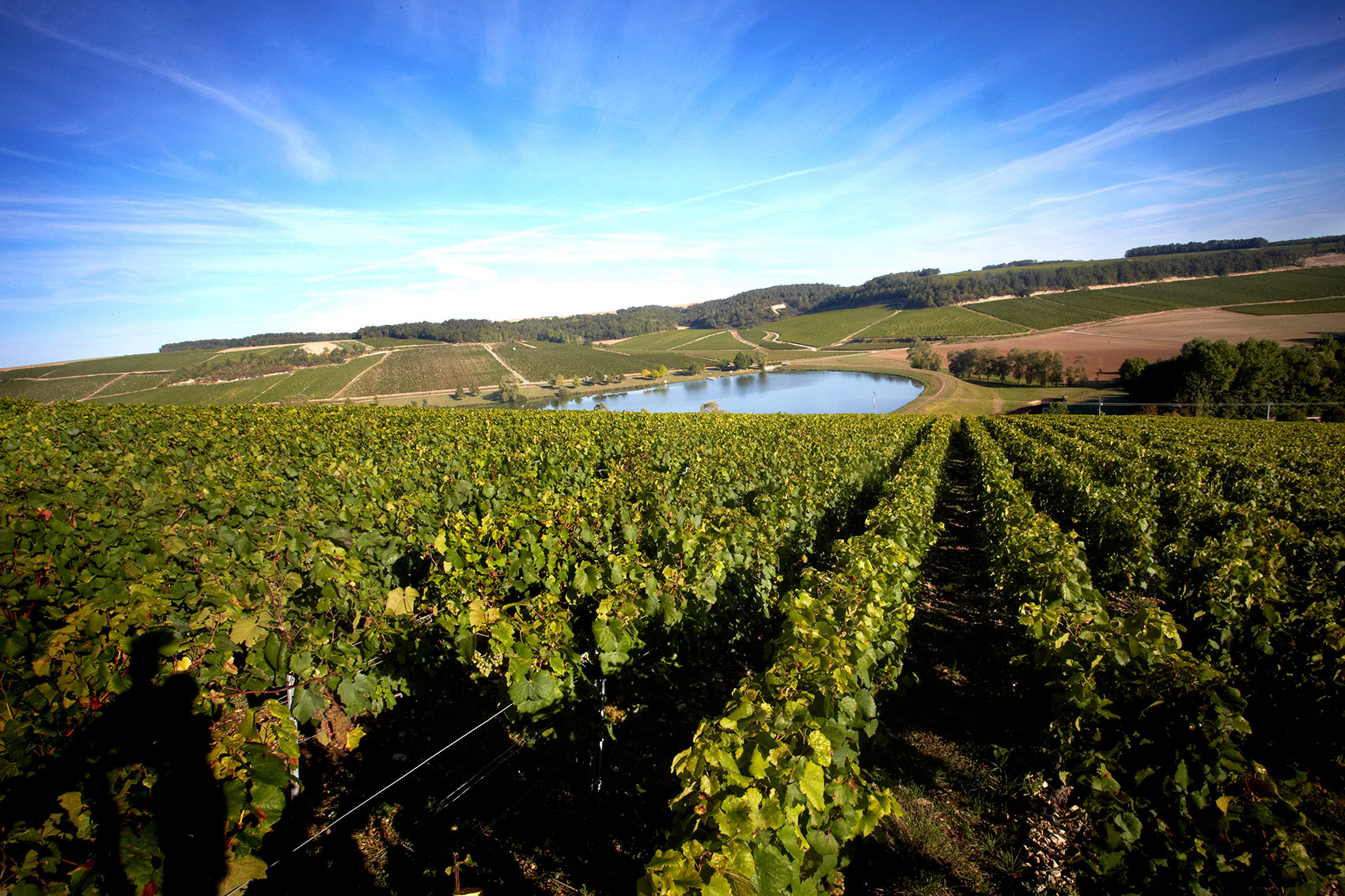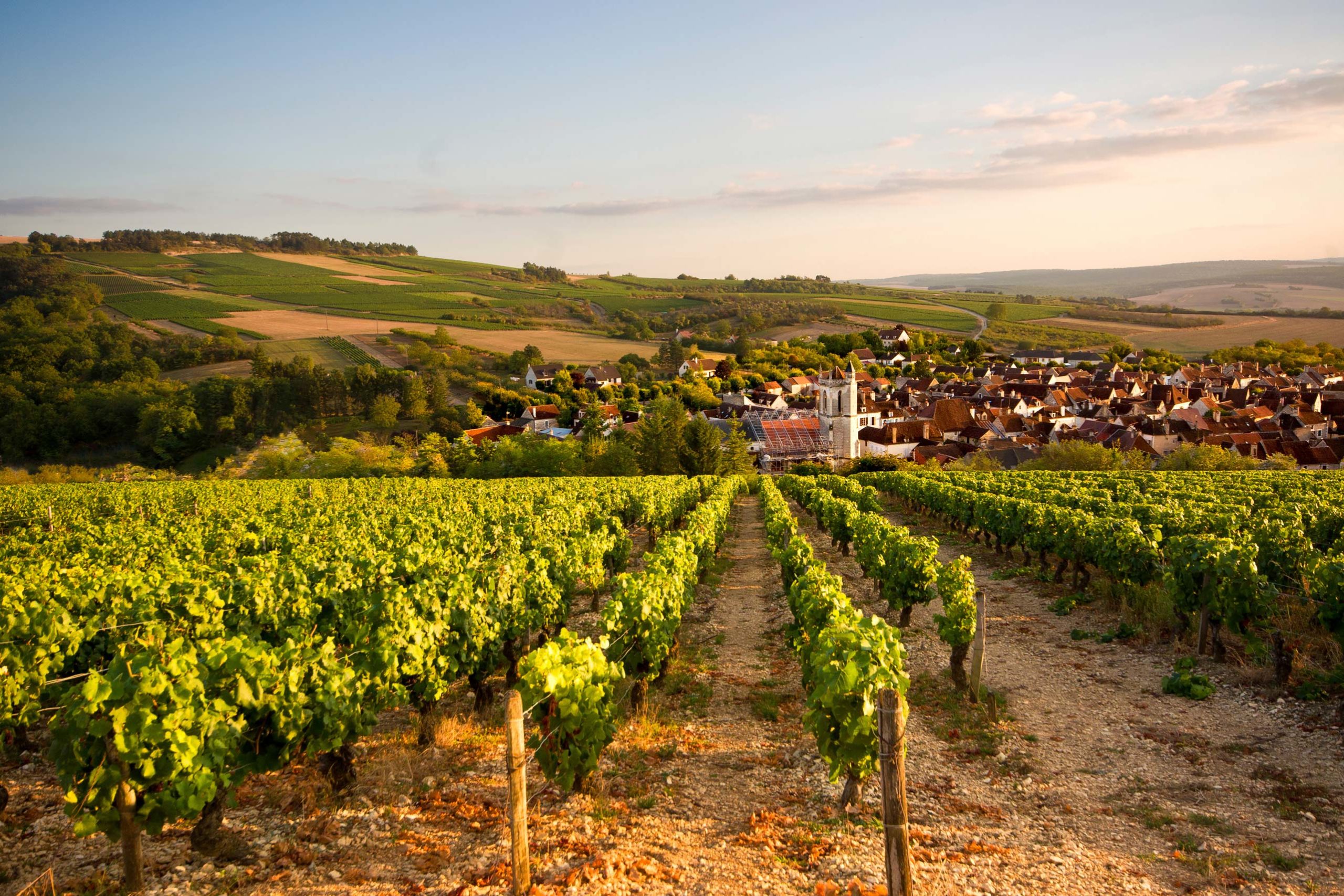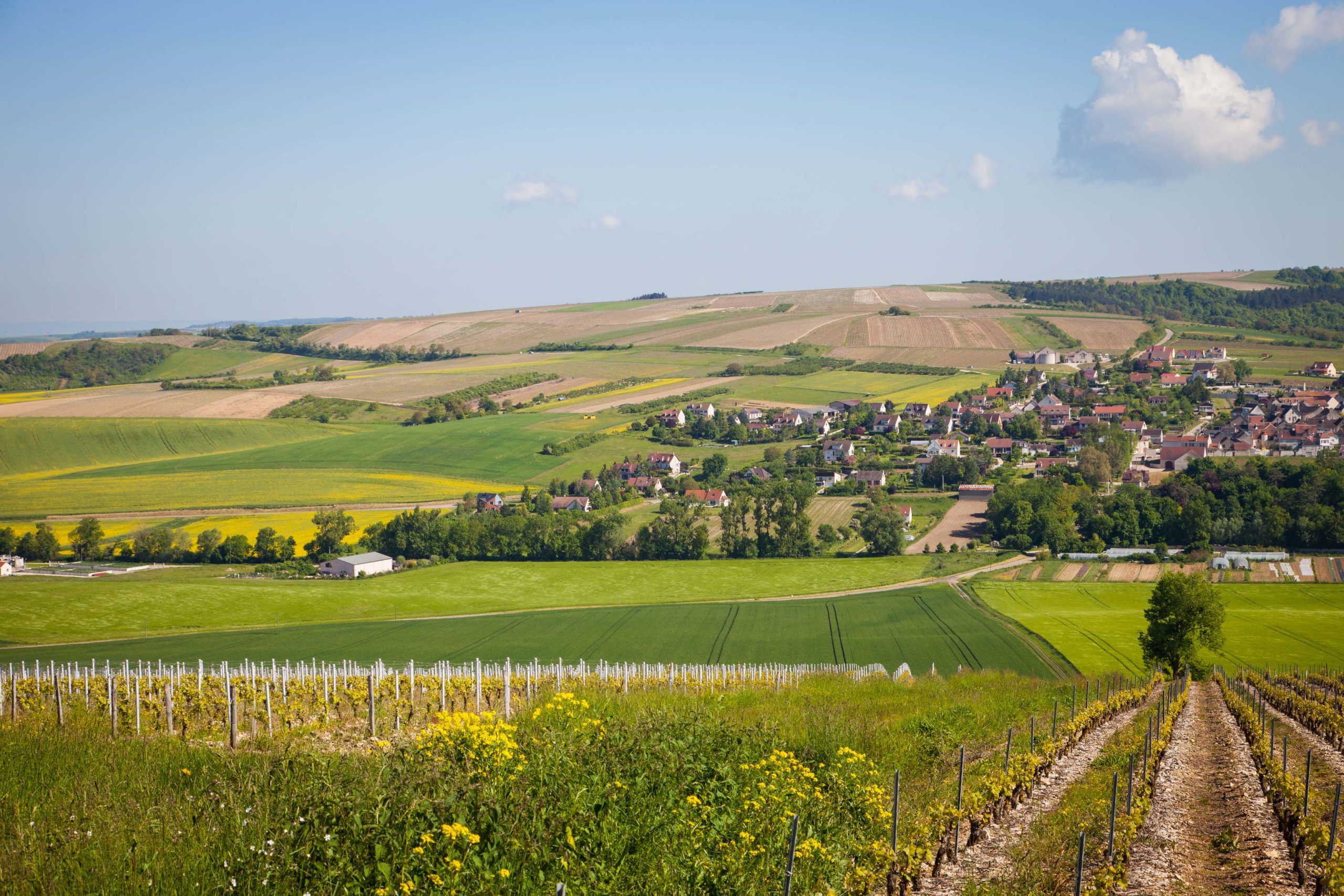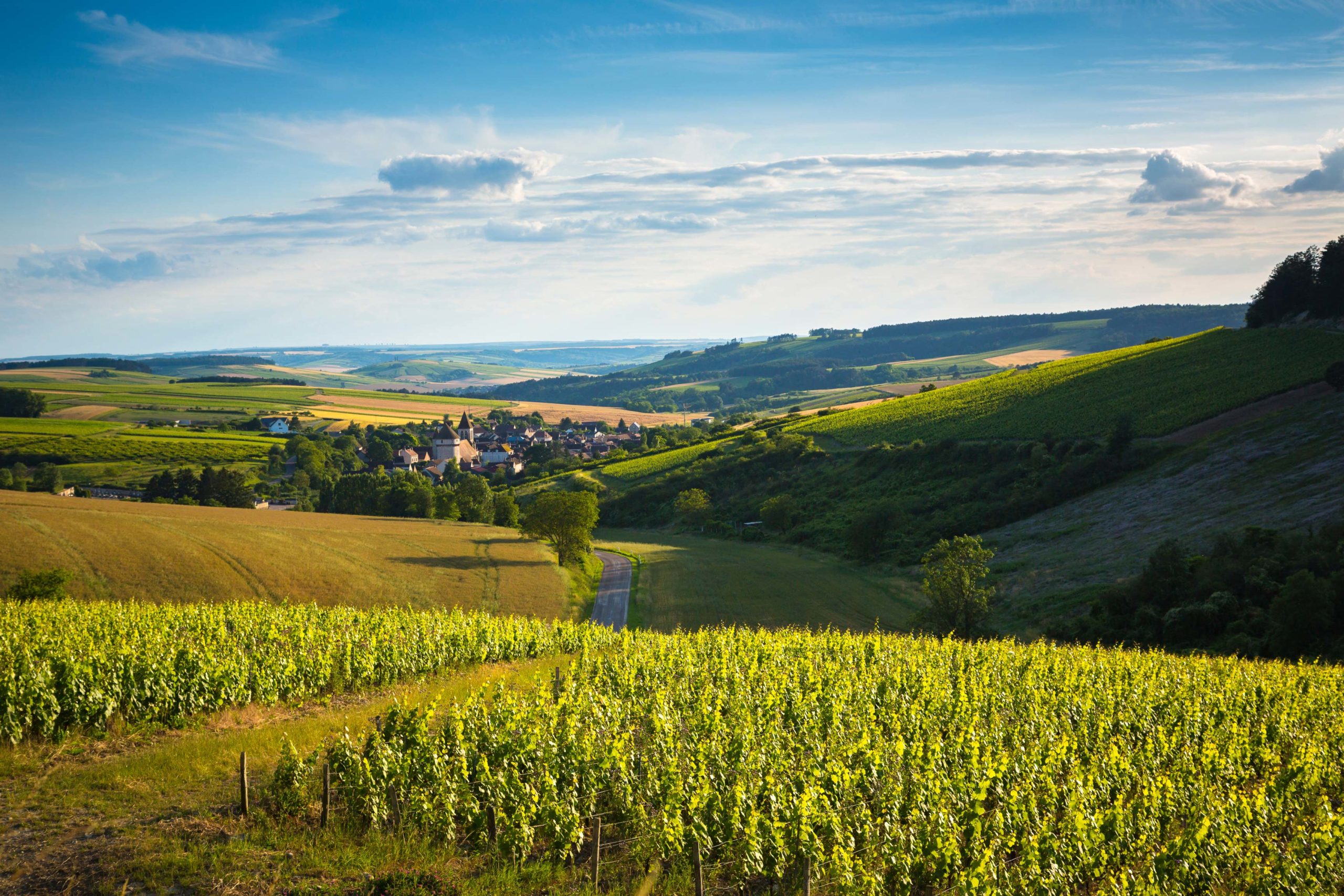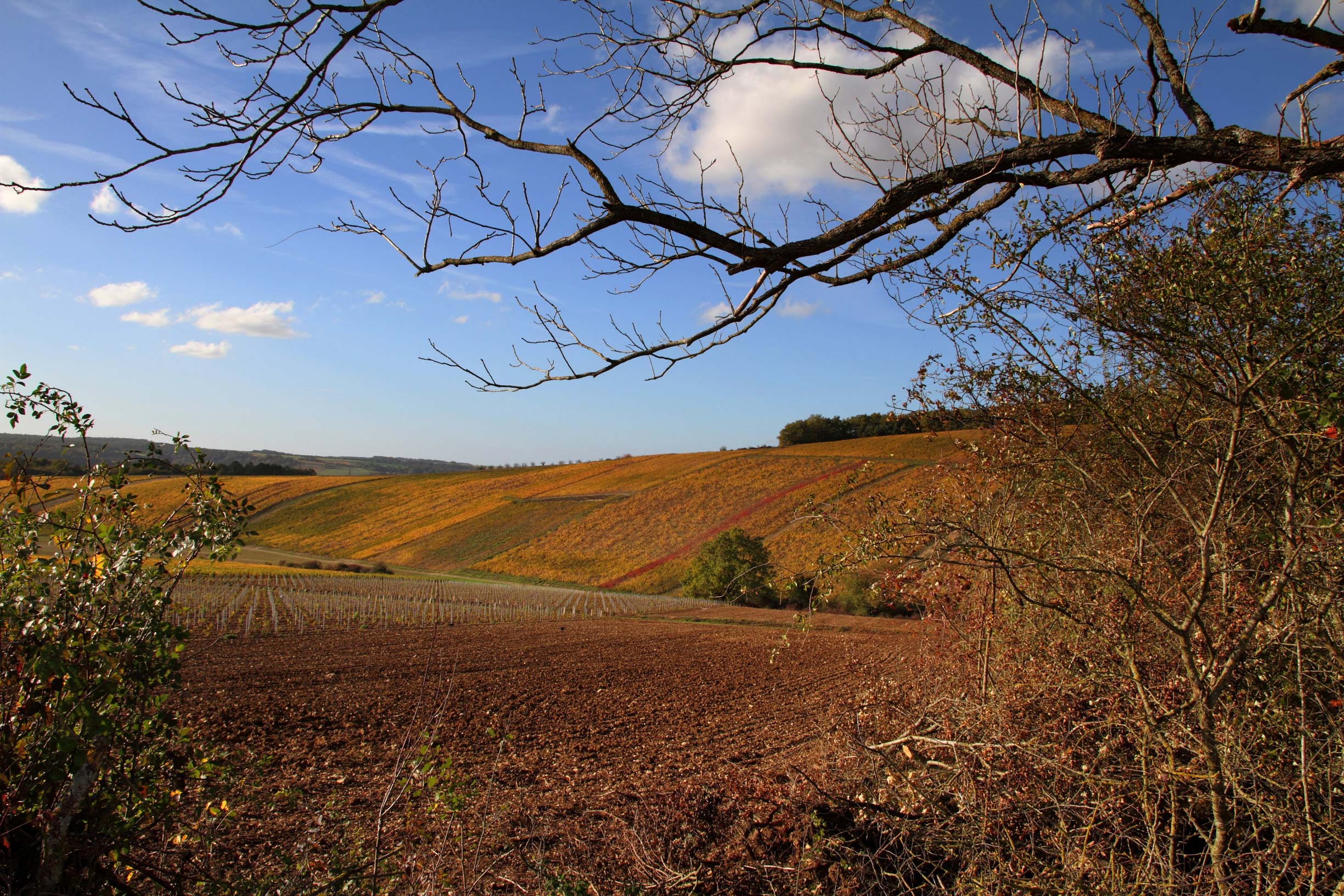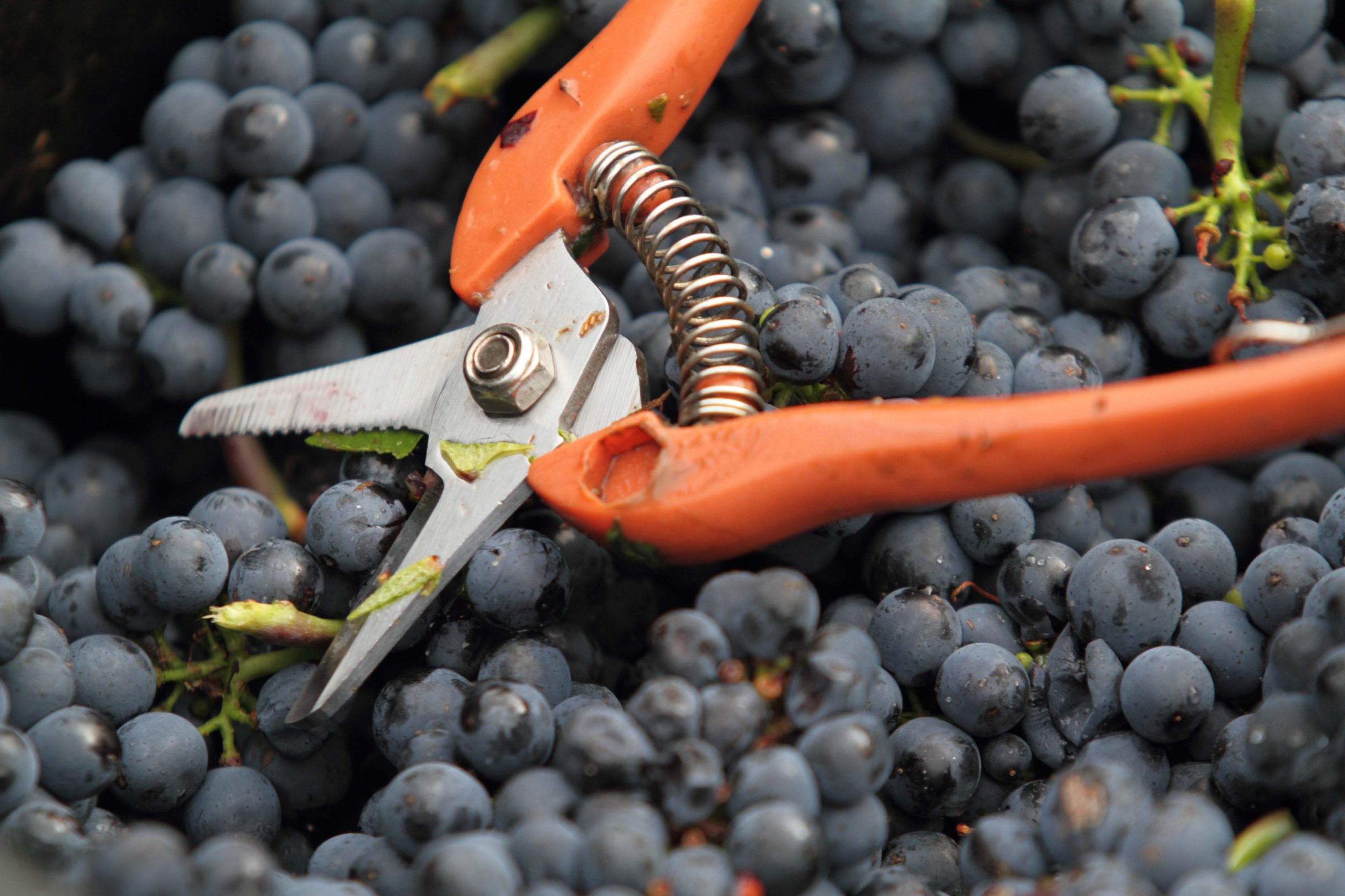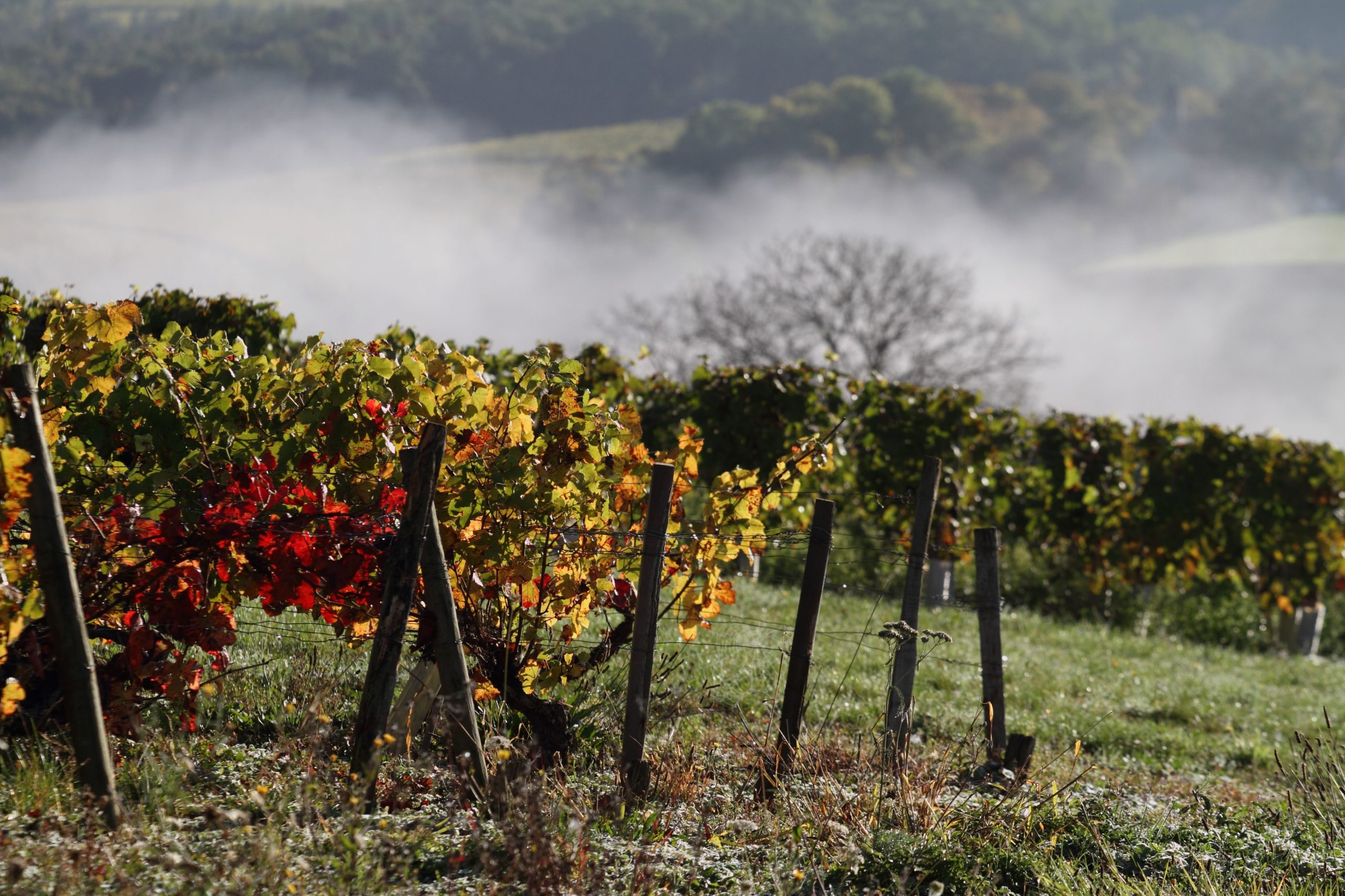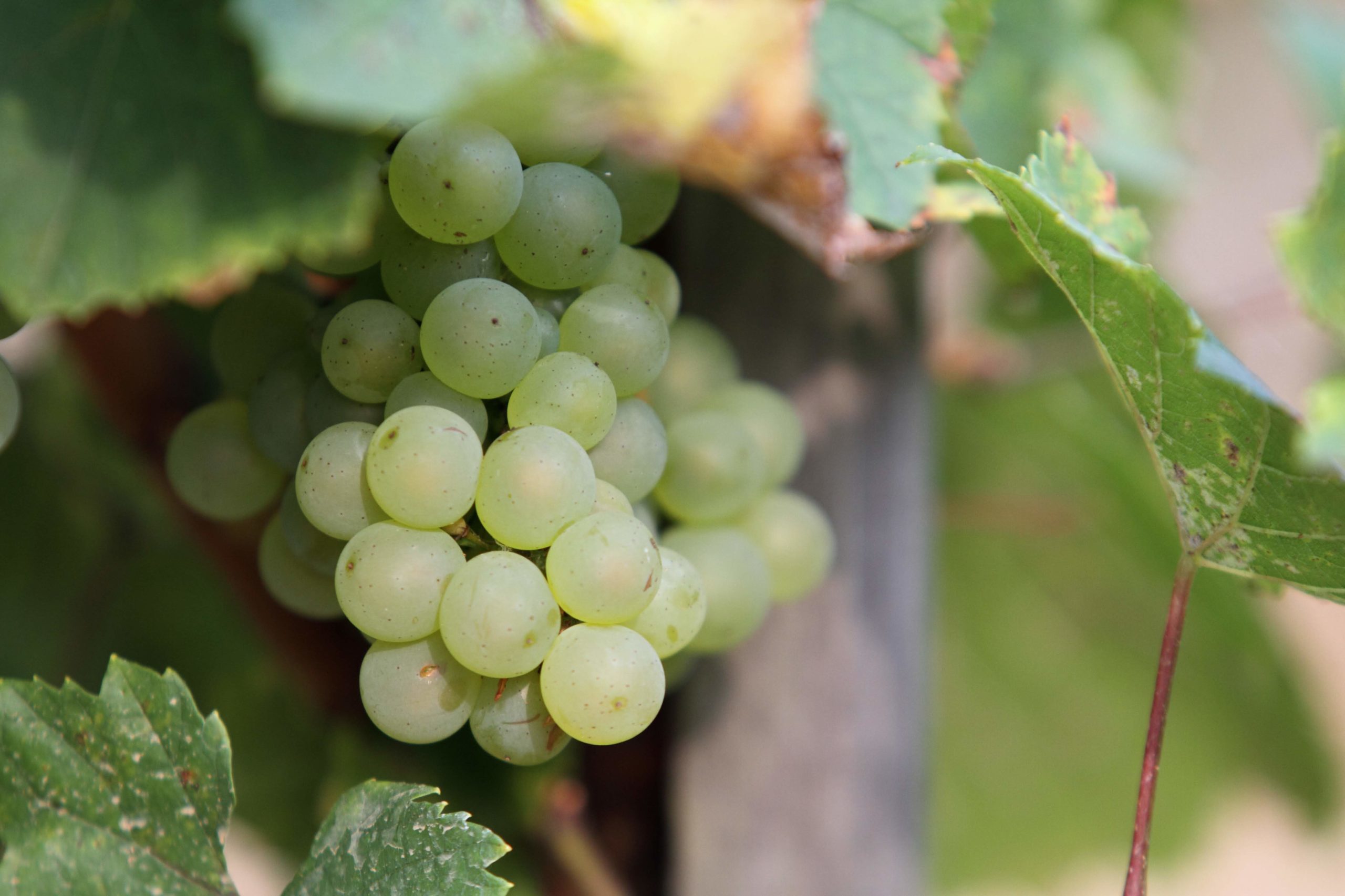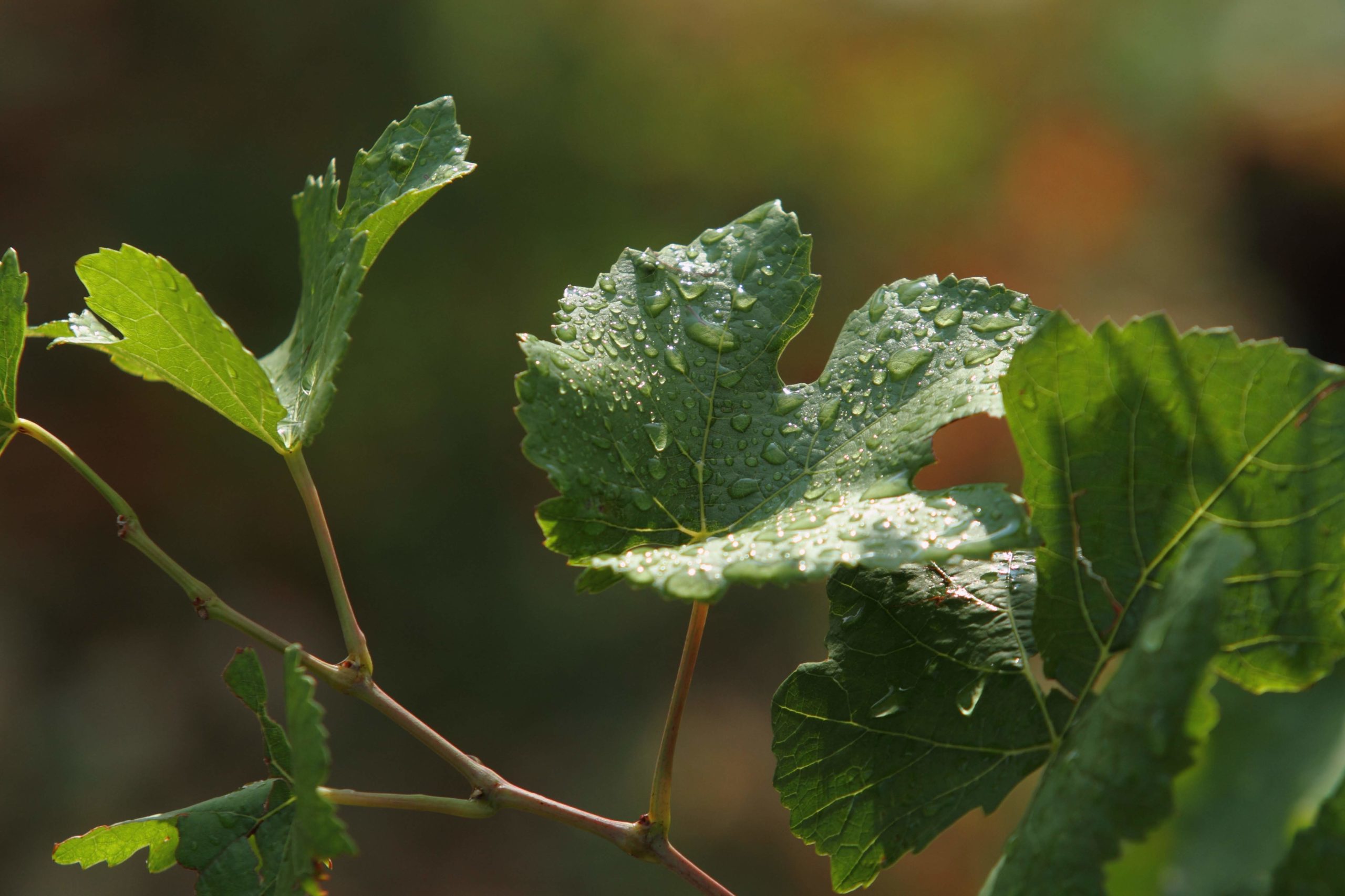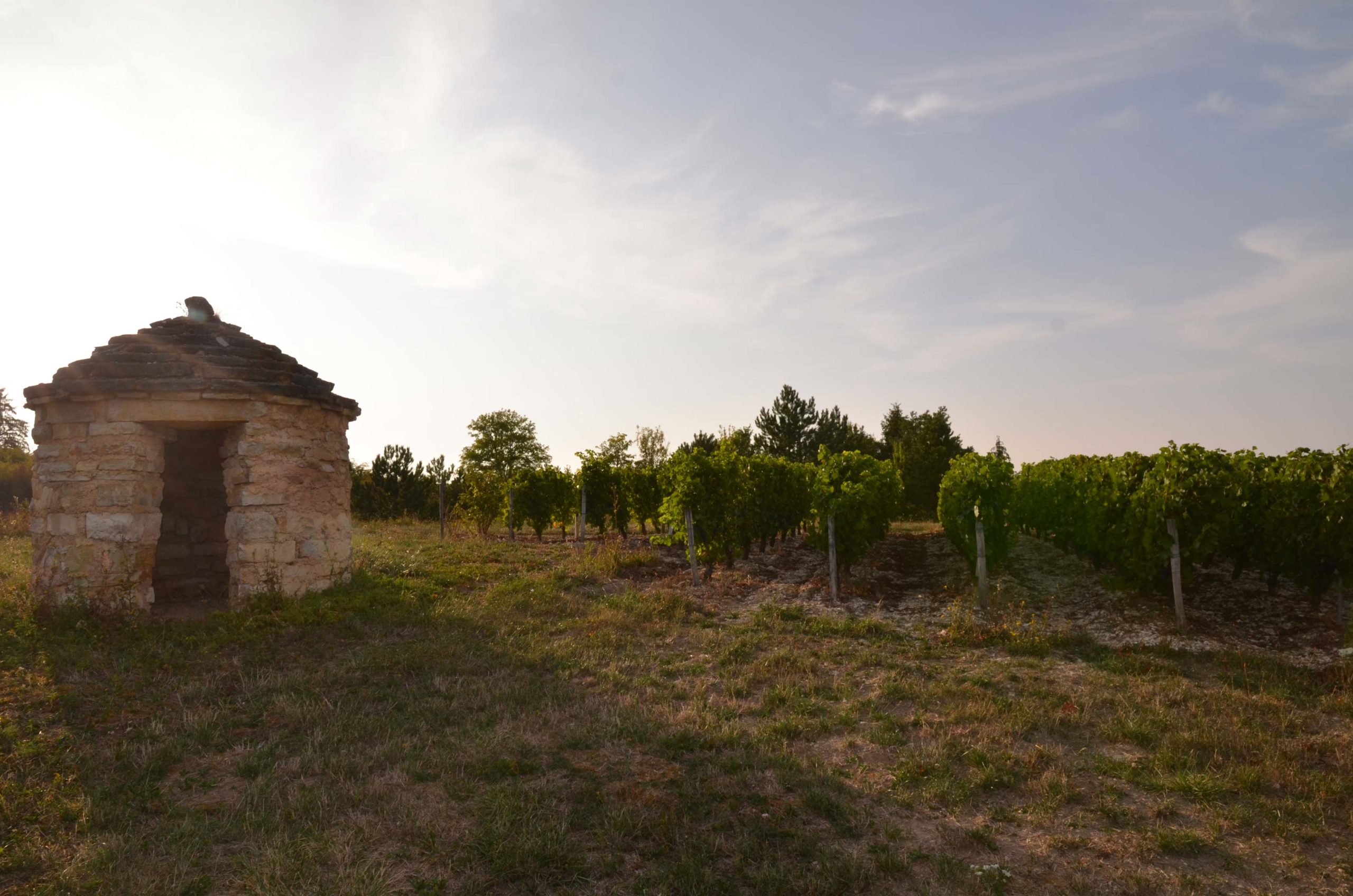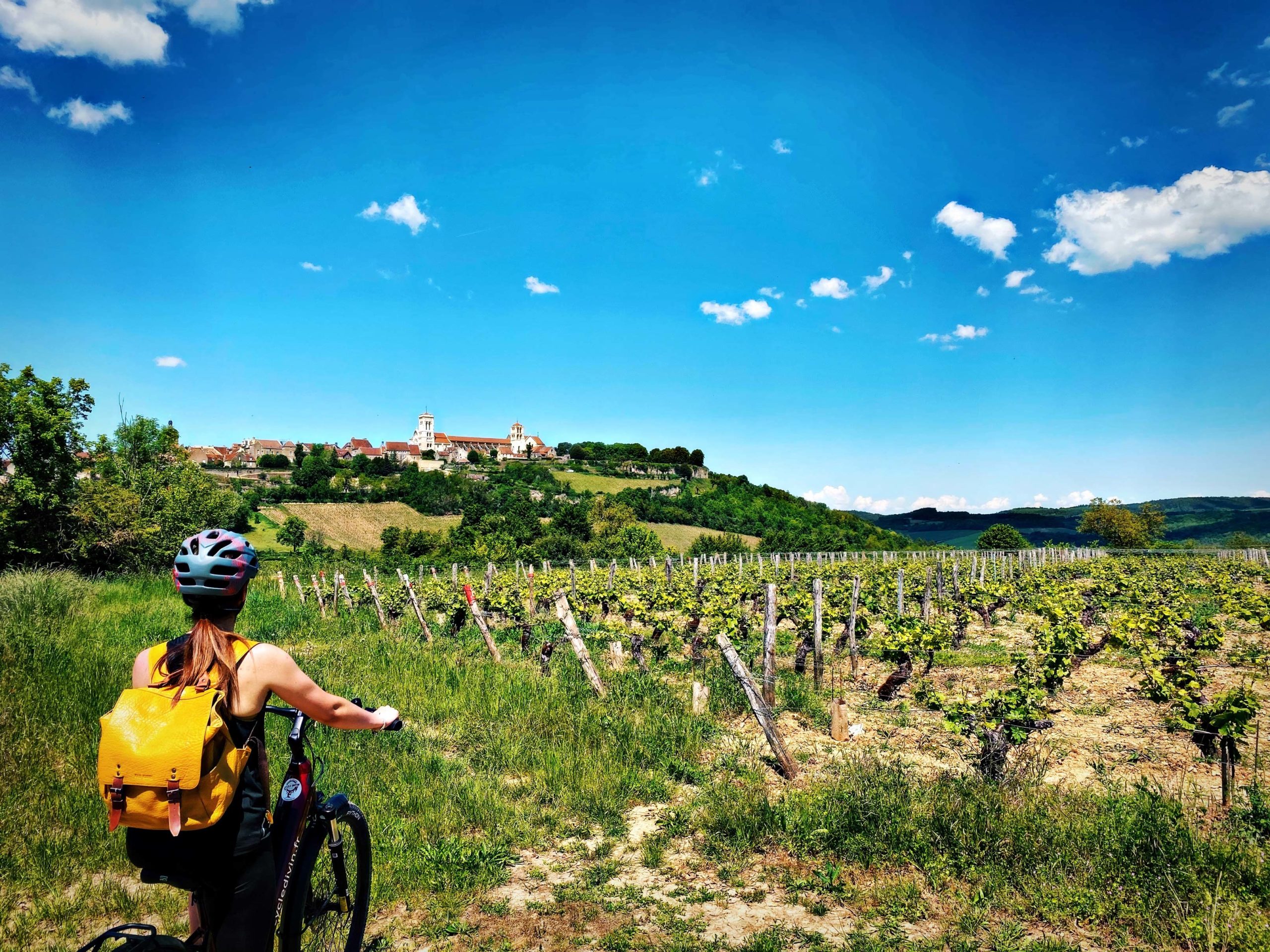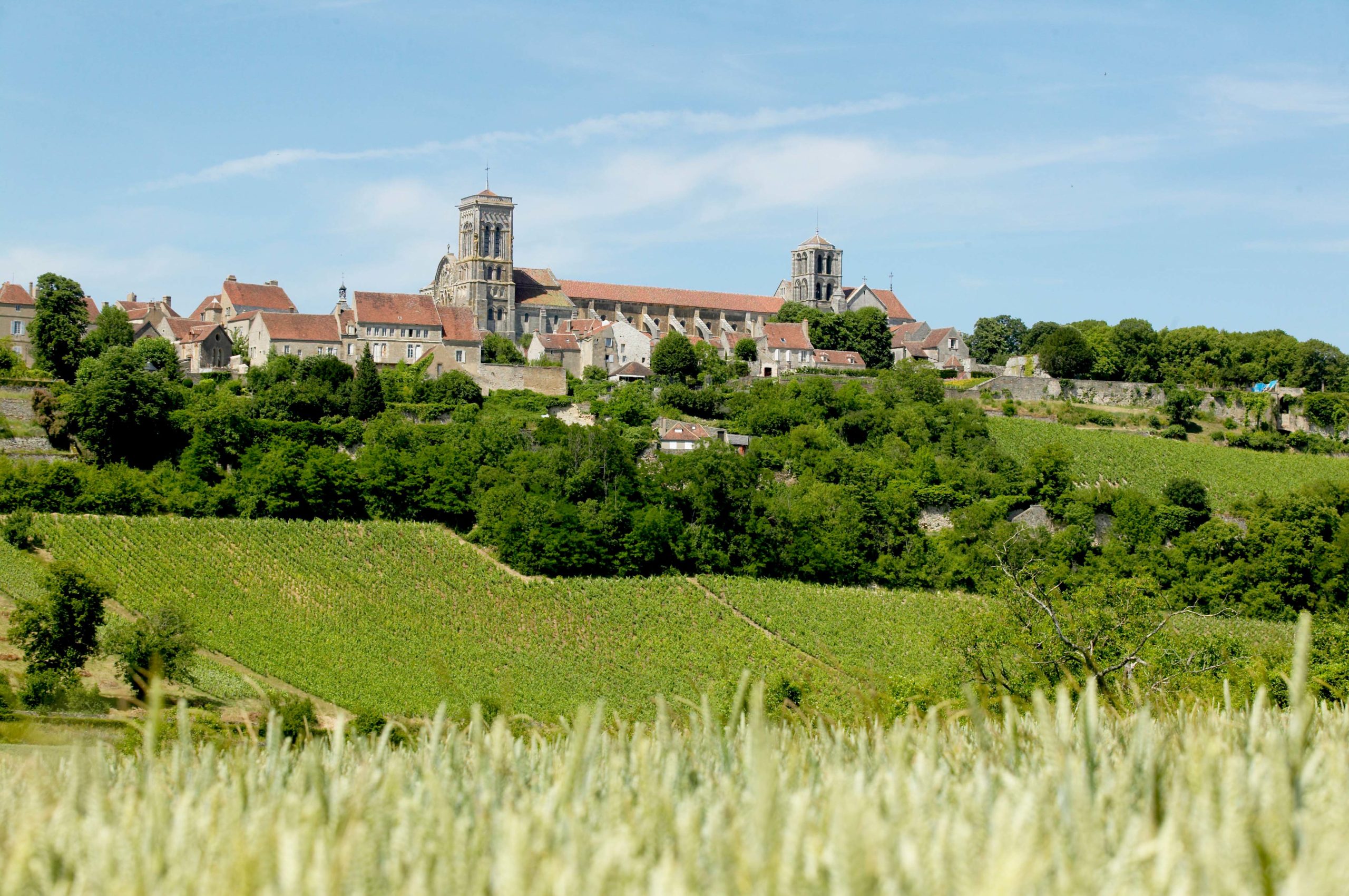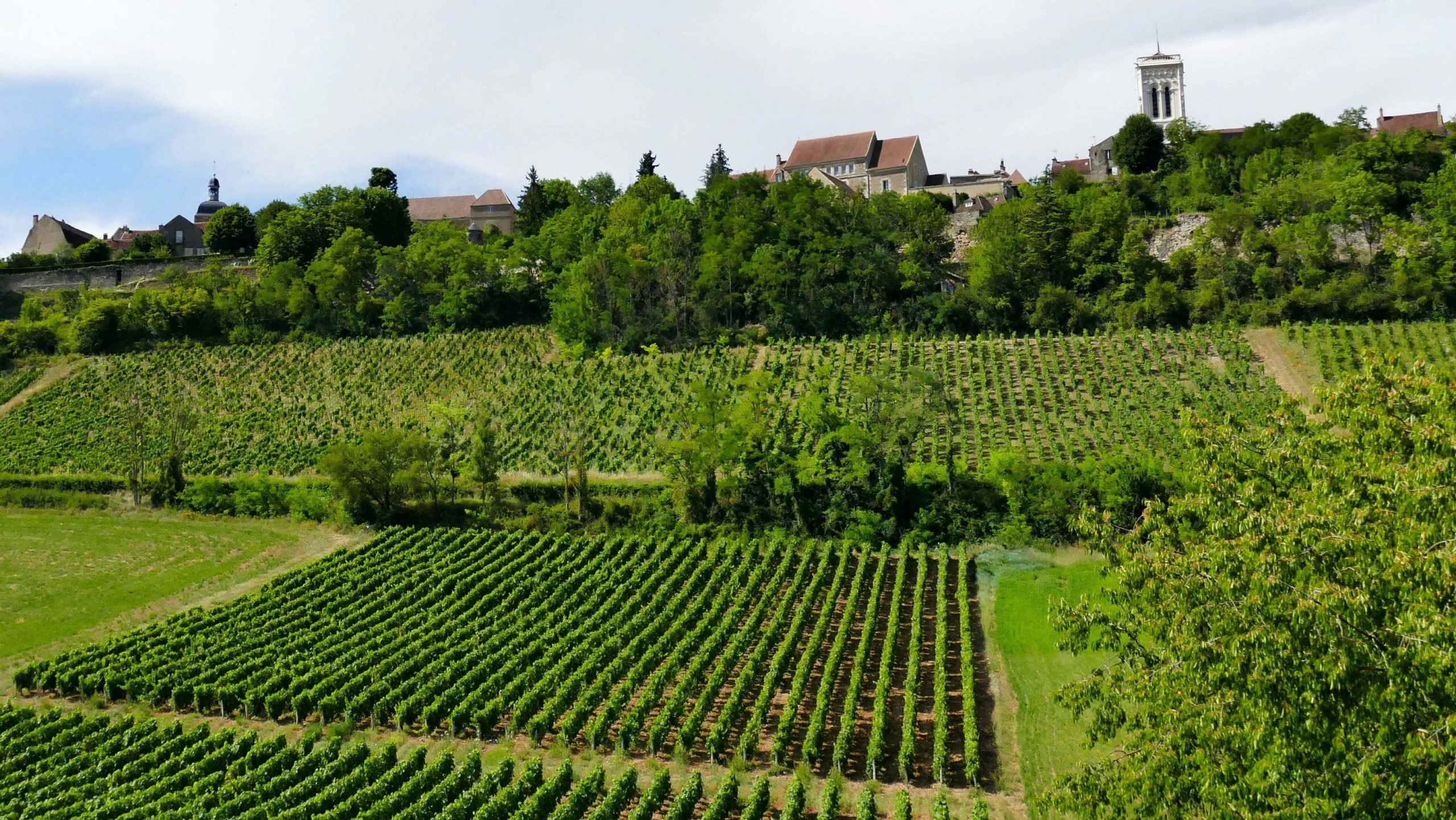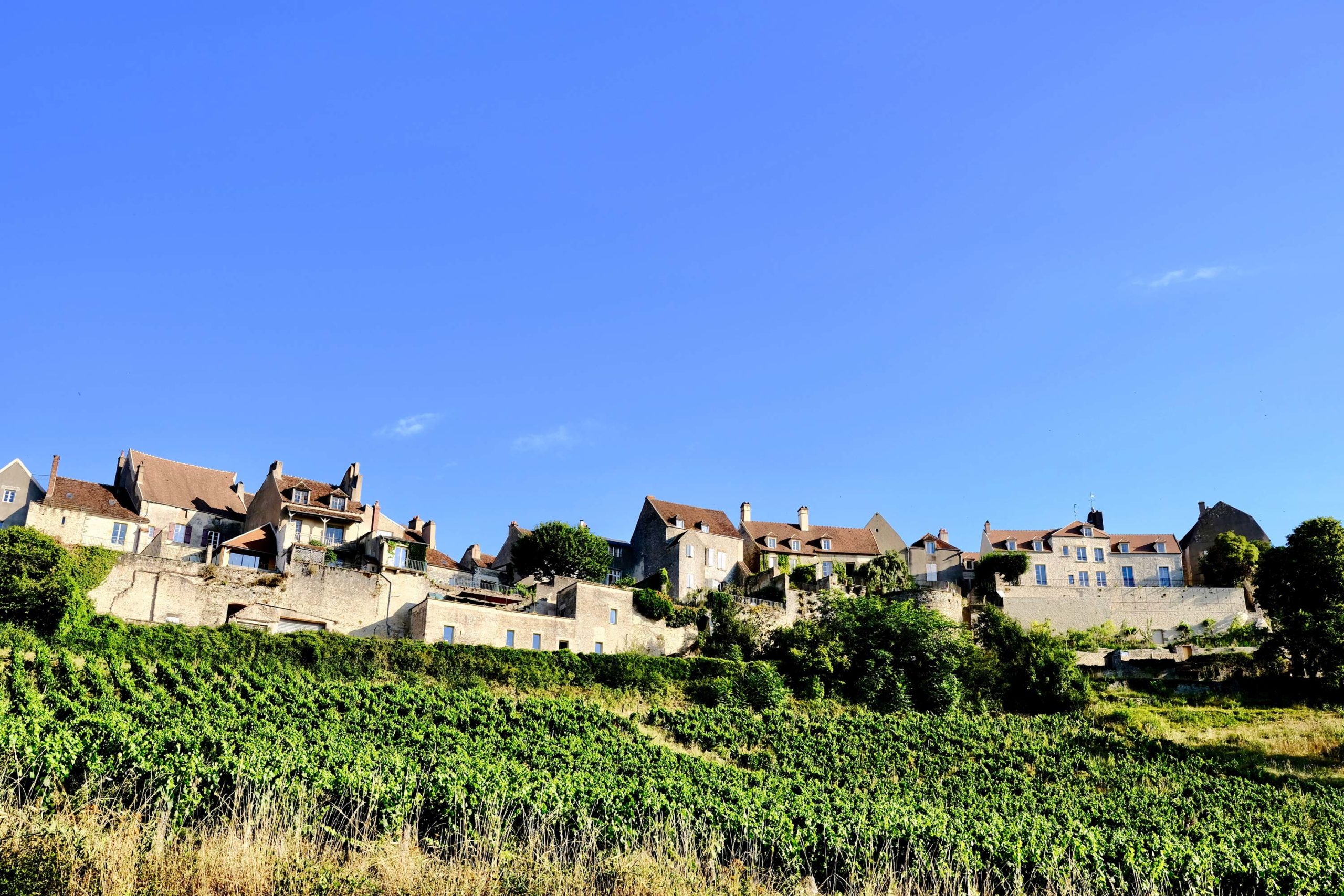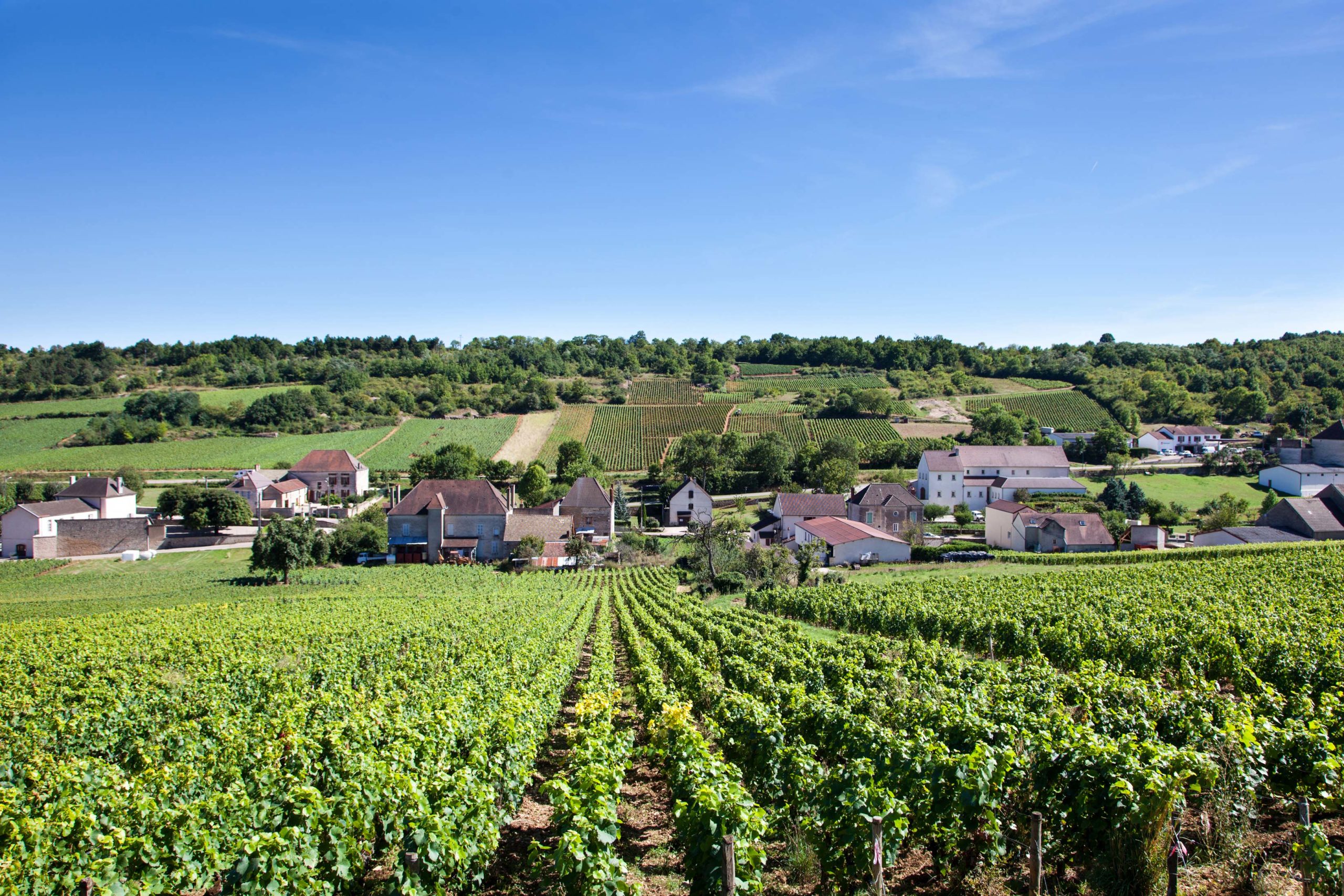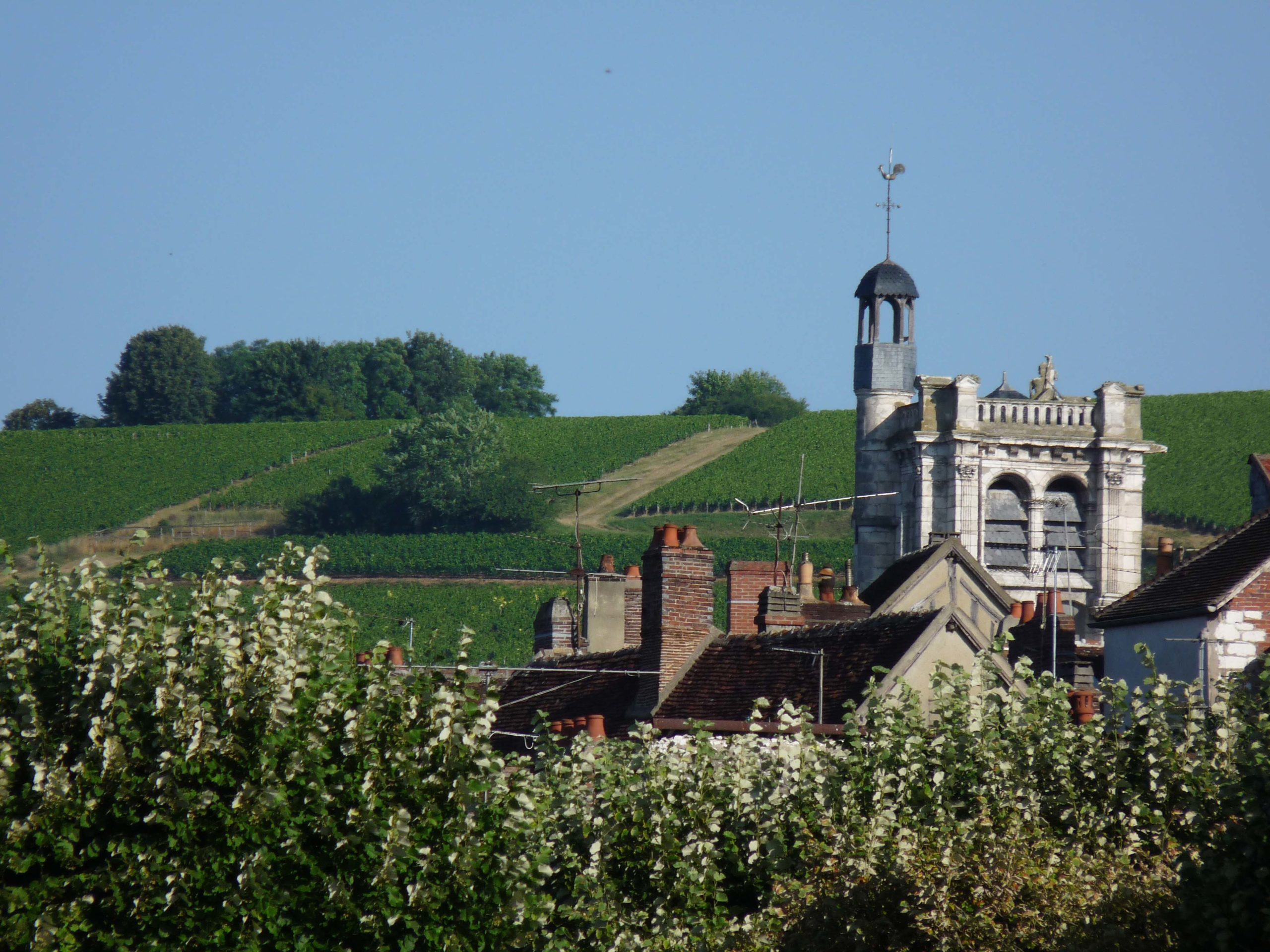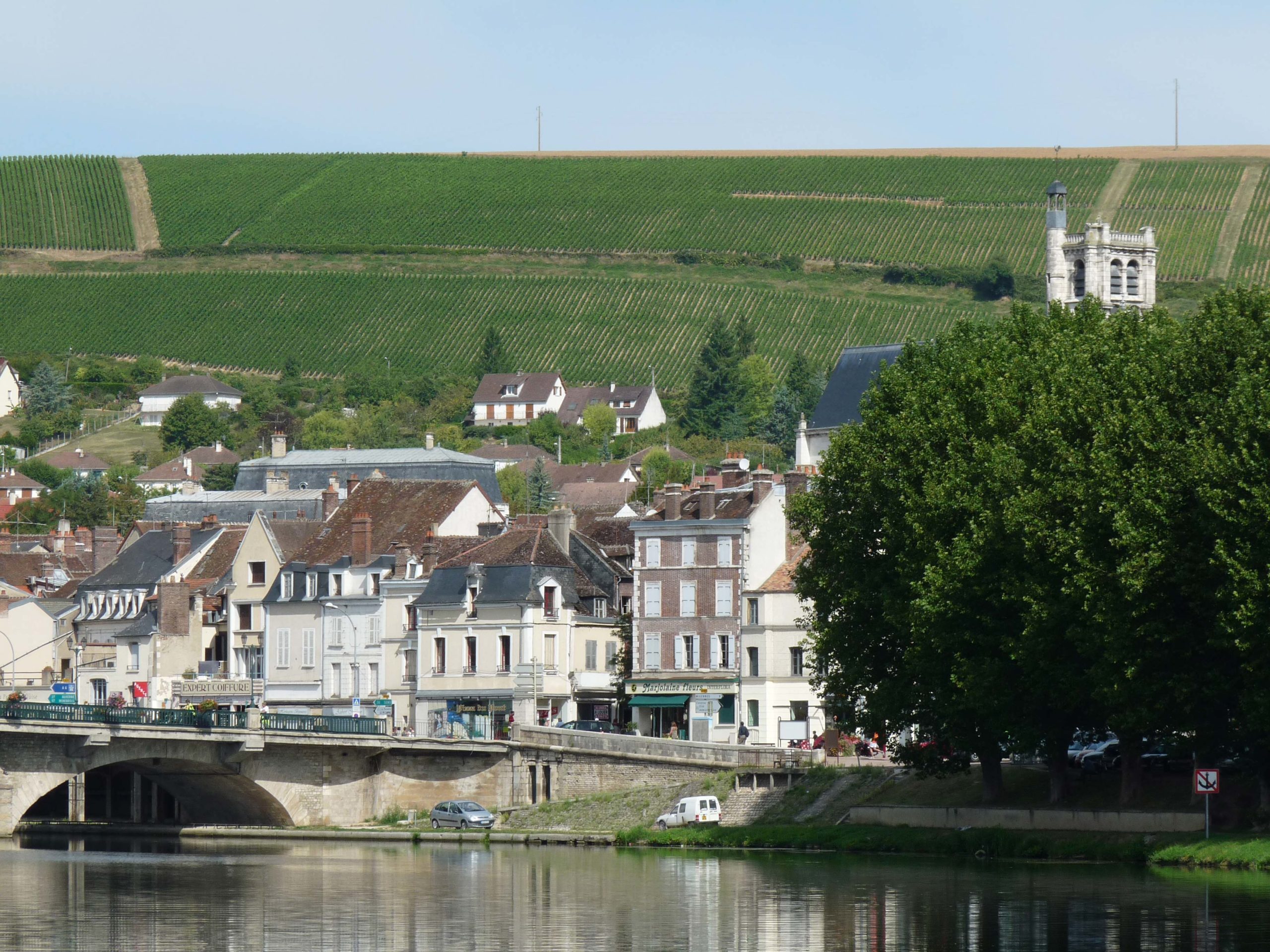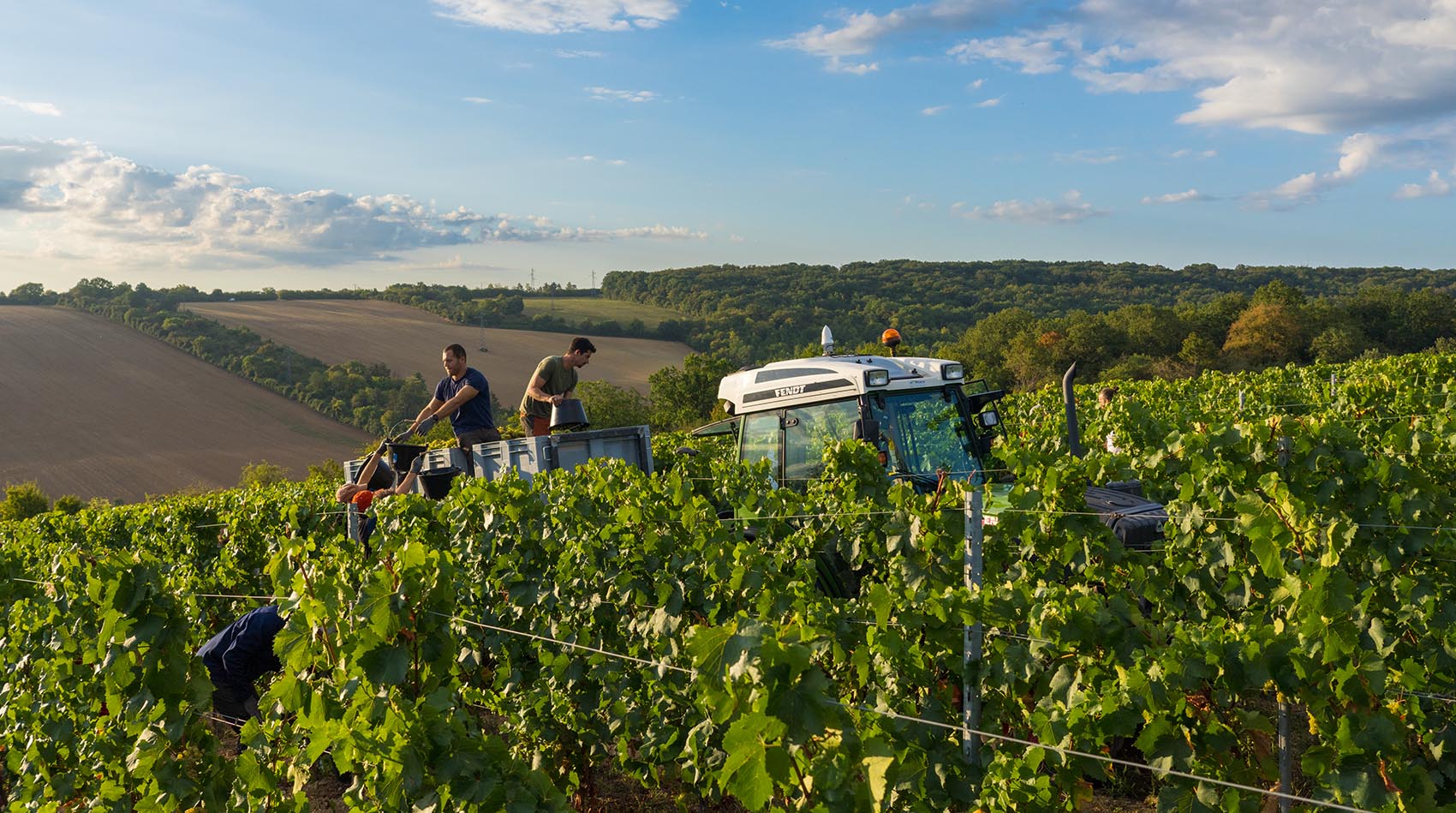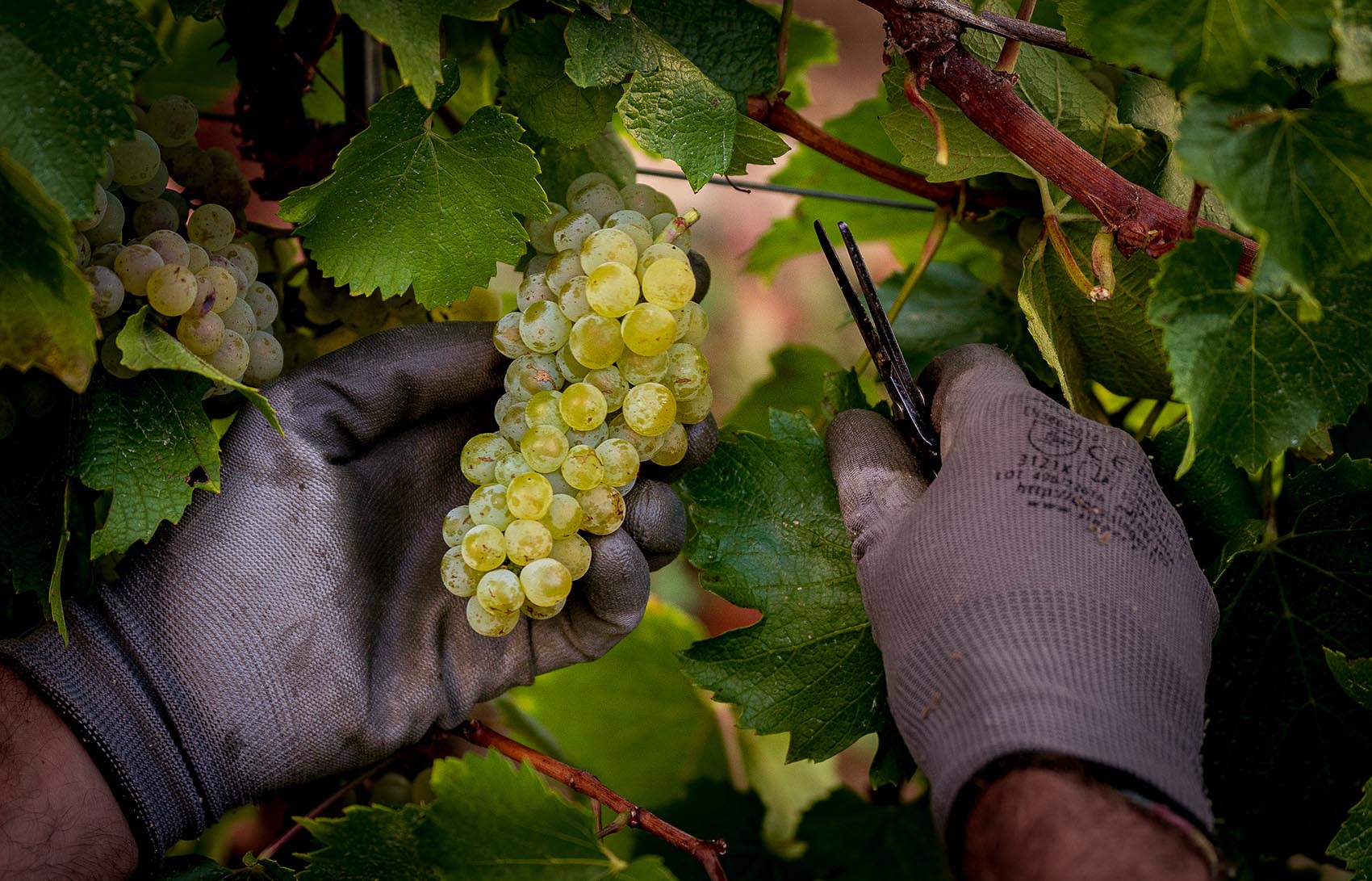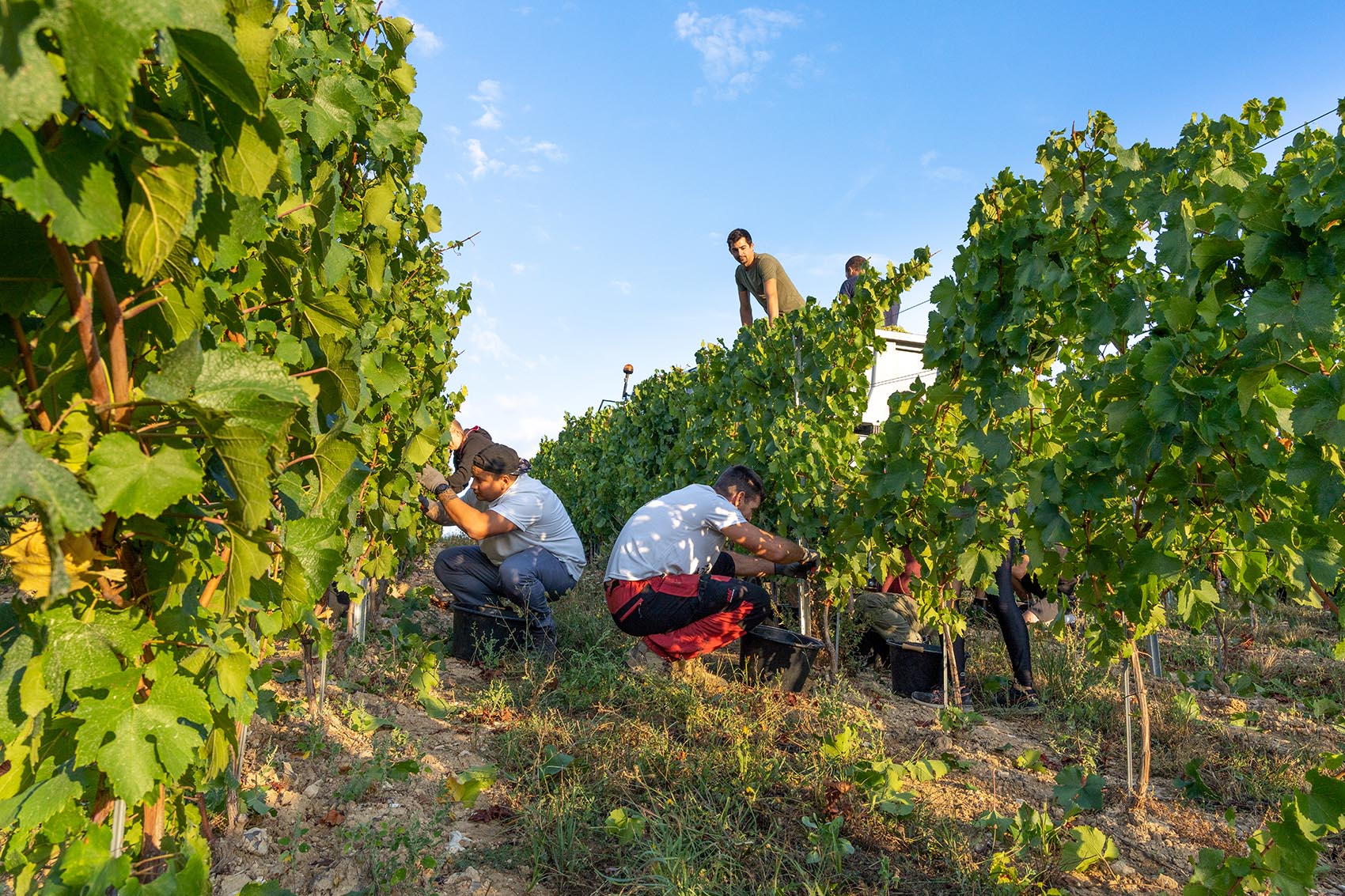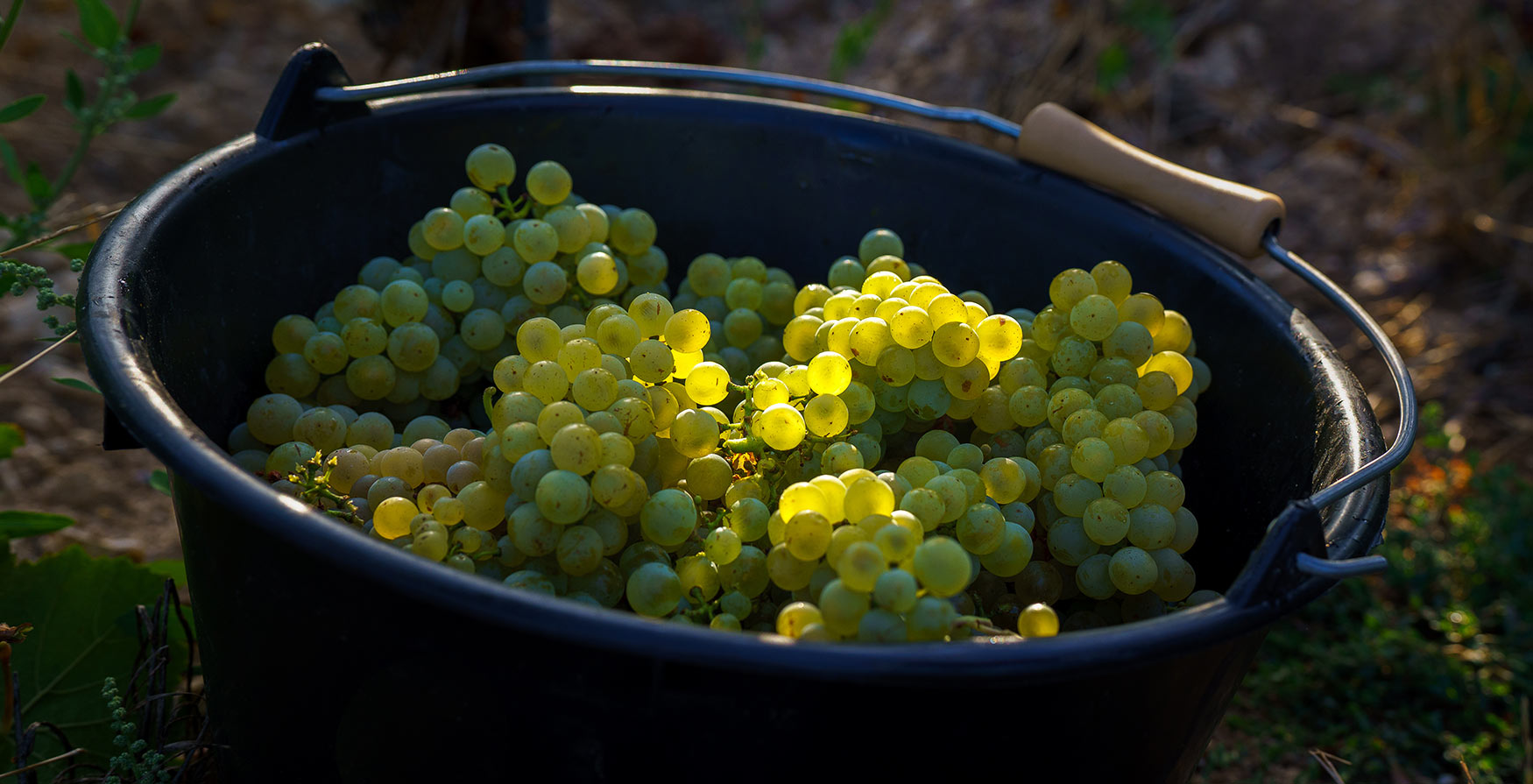THE VINEYARDS OF YONNE
To contemplate, to delight, to marvel… Lovers of good wines and lovers of vineyards landscapes, Yonne will stir up your senses. No doubt you will fall under the spell of villages that kept this typical winemaking architecture. And no doubt you will be delighted by the delicate aromas of subtle wines from the vineyards of Chablis, Auxerrois, Joigny, Tonnerrois and Vézelien.
More than two thousand years of viticulture have shaped Yonne region. In fact, the first vines were planted in the 1st century AD. They spread out throughout the territory in the 3rd century, after Emperor Probus lifted the ban on planting new vines outside Italy, in 280.
If in the Middle Ages, the abbeys favoured Gamay to make their red wines, Philippe II le Hardi, Duke of Burgundy, forbade its cultivation in 1395 in favor of Pinot Noir to improve the quality of wines.
On the other hand, in Chablis and Vézelay, Chardonnay had already been reigning supreme for a long time.
Since medieval times, Yonne’s vineyards’ fame had been confirmed thanks to the increasing speed of the river transport. The vineyards of Auxerrois but also Chablis were exported by boat, on Yonne then the Seine, to Paris, then Rouen and finally to the Northern European countries.
The vineyards of Yonne, including those of Chablisien, Auxerrois, Tonnerrois, Jovinien and Vézelien are labeled « Vignobles & Découvertes ». A promise of tasteful surprises !
Amateurs are working to add the Senonais – a vineyard that had been lost since the beginning of the XXth century – to these prestigious appellations.
Nowadays, Yonne has 547 wine growers who produce an average of 232,000 hectolitres of wine every year, 91% of which is white wine.
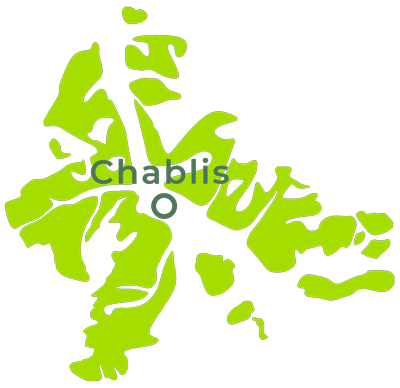
CHABLIS VINEYARD
No matter if you’re a wine lover or a layman, everyone has already heard the word « Chablis » during a conversation or a good dinner, especially when a good bottle of this iconic Yonne AOC wine enhances your table.
Back in the Middle Ages, the monks – especially the Cistercians of the nearby Pontigny Abbey –, planted the vines on the sunniest hillsides, the ones on which today are produced the wines known as « grands crus ». In the 13th century, Chablis wine became more and more famous and it was found on many crowned tables all around Europe. Completely destroyed by phylloxera, in 1887, more than 10 ten years were necessary to rebuild the vineyard.
Chablis wines are dry white wines that are distinguished by their purity, freshness, finesse and minerality. Chardonnay vine is expressed in Chablis like nowhere else. from a 150 million year old basement it draws its personality, its character, and matures in ideal conditions, in a semi-continental climate, allowing it to achieve a nice balance between its sugar richness and freshness.
Today, Chablis wines come in 4 appellations: small chablis, chablis, chablis premier cru and chablis grand cru. They represent 72% of Yonne’s vineyards and 19% of Burgundy’s.
Known for its light gold colour, leaning on a green or sometimes pale side, this white wine offers freshness, minerals and liveliness. In the mouth, you will keep a very fresh and pure flavor thanks to the aromas that will satisfy you with a dry wine of perfect finesse. Chablis has a unique and very recognizable personality.
Know-how does not exist in our profession. To be a winegrower you simply need a passion for working the vine and a pure soul, which give way to vocation only that one could assimilate to a “priesthood”. My grandfather and dad passed on this vocation to me, but I never heard the word excellence.
Only our terroir expresses the greatness of wine. Ours is extraordinary and incomparable, it offers our wines a richness rarely encountered, the noses are of a seamless elegance, their complexity attracts the greatest tasters of France. Even more so, our wines are gourmet, they appeal to new enthusiasts…
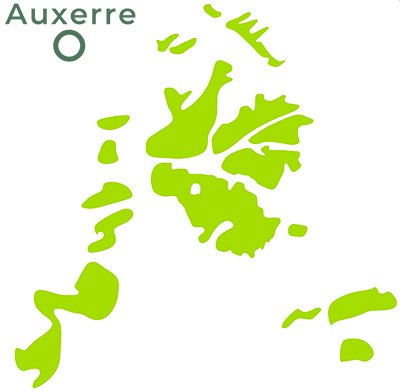
AUXERRE VINEYARD
Grown around Auxerre since the Gallo-Roman period, the development of the vineyard followed the evolution of trade by water towards Paris. Nowadays, about 1,300 hectares are cultivated on the slopes located in the south of Auxerre, between the villages of Mouffy, Irancy and Chitry, to produce five famous appellations: Irancy, Saint-Bris, Bourgogne Côte d’Auxerre, Bourgogne Coulages-la-Vineuse and the Bourogne Chitry. The estates of these appellations also keep some vines to produce Crémant de Bourgogne, Bourgogne Aligoté, Bourgogne Passe-tout-grains and ordinary Bourgogne.
From Rouge, Blanc, Rosé, Crémant, Auxerre’s vineyard offer a large palette of colors and flavors, with a production of wines from the main Burgundian grape varieties (aligoté, chardonnay, pinot noir, césar, chardonnay, sauvignon, sauvignon gris…). From appetizer to dessert, the wines of Auxerrois will enhance all your dishes!
Listening to Gabin and Felix Richoux describe their work in the vineyard, to tell the story of the family estate that has been producing wine since 1620 and to evoke the future is fresh. The smile is on their lips to tell the joys of good years as well as the whims of nature, which are able to waste 18 months of hard work.
There is no doubt that, in the middle of the vineyard rows, during vigorous winters, the periods of frost are severely experienced. But the two brothers are not so easily discouraged. Above all, they have the passion for their profession that their parents Thierry and Corinne Richoux taught them. Above all, they know that they have the chance to produce Irancy, an exceptional wine and a world-famous appellation.
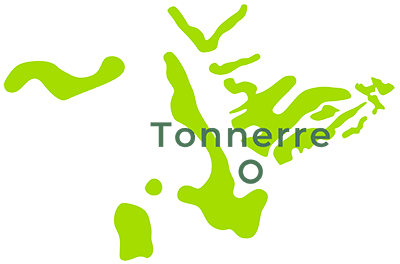
TONNERRE VINEYARD
Located in the Armançon valley the vineyard of Tonnerre (Tonnerre and Épineuil) is one of the oldest in France. It has a clay-limestone soil and a privileged layout on the steep and sunny hillsides. The cultivation of vines in this territory dates back to the ninth century when the monks of the abbeys of Quincy in Tanlay and Saint-Michel in Tonnerre intensified and improved the growing of vines and wine production. Some of the techniques that were adopted at the time are still being used today. An anecdote said that the Chevalier d’Eon, spy of King Louis XV and native of Tonnerre knew how to use the euphoric effects of local wines to get some secret information…
It was in 1969 that men revived the vineyard as we know it today. They have gradually reinvested the best hillsides of Tonnerre, Épineuil, Molosmes, Junay and other villages with typical and carefully chosen Burgundian grape varieties. Today the vineyard covers 240 hectares planted half in Pinot Noir and half in Chardonnay.
For Céline Coté viticulture is above all a way of life that allows her to practice her profession outdoors, in contact with nature, following the rhythm of the seasons and with respect of its values.
Terroir, transmission, environment… cultivating the land is an art of living that she skillfully maintains day after day. A philosophy of life that led her to attach the greatest value to the land where life draws its strength, producing organic wine.
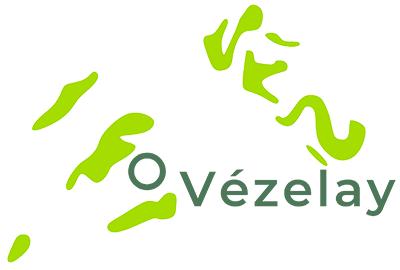
VÉZELAY VINEYARD
Since ancient times, the vine has been cultivated in the very South of Yonne, on the edge of the Morvan Regional Natural Park. During the Middle Ages, with the establishment of Christianity, the creation of estates connected with the abbeys developed. In 1058, Vézelay became an important place of pilgrimage and the starting point of one of the paths to Santiago de Compostela, and that’s how the production of wines increased with the growing number of pilgrims.
The grape variety of the AOC Vézelay – the Chardonnay –, is planted on 90 hectares in the towns of Vézelay, Asquins, Saint-Père and Tharoiseau.
Like its neighbors it was decimated by phylloxera of the 19th century before the vineyard was finally reborn in the 1970’s. It obtained the regional name Burgundy in 1985 and the name Burgundy Vézelay was created in 1996. The consecration for these white wines came in 2017 when it was recognized with its own denomination : AOC Vézelay.
For a breathtaking view of the vineyard, taste this wine with fine aromas and golden color at the foot of the Sainte-Marie-Madeleine basilica, classified as World Heritage of Humanity!
By offering you to visit their domain, Sophie and Matthieu Woillez give you an appointment with History.
The history of the restoration of the old farm of Tharoiseau castle that they undertook in 2009, the history of the resurrection of an appellation in the 1970s, and the history of an architectural jewel, the Basilica of Sainte-Marie-Madeleine de Vézelay, built in the 12th century, and listed in the Directory of Historical Monuments as well as in the UNESCO World Heritage of Humanity.
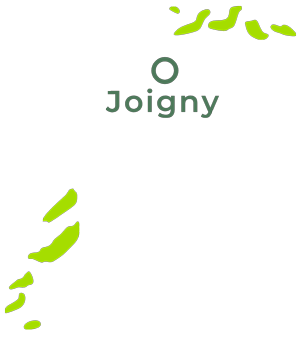
JOIGNY VINEYARD
The northernmost vineyard in Burgundy offers a magnificent view on Joigny and Côte Saint-Jacques’ vineyards. Mentioned in writings dating from 1082, the vine grew up until the 18th century. In 1731, the newspaper « Mercure de France » defended that Côte Saint-Jacques’ wines were better than Auxerre’s. At the time, the conflict between winemakers reached a climax. The “wine battle” of Yonne lasted until the beginning of the 19th century when winemakers from Joigny favoured productivity to meet Parisian demand.
Following the phylloxera crisis at the end of the 19th century, all the vines were destroyed. Only about forty hectares had been replanted on the 600 farms and finally the vineyard was revived in the 1970s It was labelled AOC in 1975. Today, more than 50% of vineyards are dedicated to the AOC Burgundy Côte Saint-Jacques. A renewal driven by the doubly Michelin-starred restaurant, the Côte Saint-Jacques, which is located below the AOC’s hillsides.
Nowadays, Joigny vineyard represents 55 ha and with the vineyards grown in the communes of Champvallon and Volgré, the Jovinian vineyard.
Côte Saint-Jacques appellation is closely linked to the Vignot family. With 10 hectares exploited by Alain Vignot and now by Julien Vinot on the 13 hectares – 30 benefiting from the appellation –, we could almost talk about identification. Moreover, the Vignot estate is the only producer of Burgundy Côte Saint-Jacques Blanc.
But Alain’s humility and his son’s, Julien, lead them to place the vineyard and the land at the heart of their story. For it is indeed evoking the vine, its secrets, the care it requires daily that makes Julien’s eyes shine. It is by talking about his work with his interlocutors that the young winemaker modestly reveals himself.
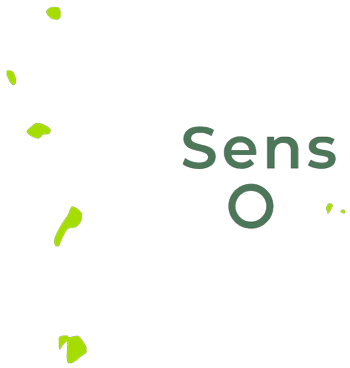
SENS VINEYARD
The presence of vineyards in Sens region dates back to antiquity. A royal edict of 1416 classifies these vines among the vineyards of Burgundy by establishing that the wines located upstream of the bridge of Sens are “Burgundy” and those located downstream of it “Ile-de-France”. In the Middle-Ages the wines of Sens and its surroundings conquered the tables of the kings of France. Until the end of the 19th century, they were served in the bars of the capital’s popular districts like the Black Cat, Aristide Bruant’s famous cabaret.
In 1890, the vineyard was attacked by phylloxera, an insect from the United States. It was also challenged by southern wines that took advantage of the new railway to be exported. Finally, the First World War marked the end of viticulture in Sens region.
Located in Paron, the Domaine des Sénons revives this disappeared vineyard. Soil, geological and chemical analyses revealed a great terroir. The Domaine des Sénons has vaulted cellars, cut in chalk, reputed of medieval origin, making an ideal setting to conserve its vintages.
Co-founder of a consulting firm, Frédéric Duponchel had a sweet dream for years : replanting vines Sens region. Her daughter, Marie Duponchel, has made a bold choice. After a Master in Public Management at the University Paris-Dauphine promising her a future in project management she decided to reorient in viticulture and she graduated in Viticulture-Oenology.
His son-in-law, Florian Ruscon, dreamt from an early age about working the land. The young man gave himself the means to live his passion by getting a professional license in plant production. Three lovers of the earth, aware of what everything nature has to offer, who have decided to take on a huge challenge together in sharing with all those who love alloys of new flavors and aromas.

